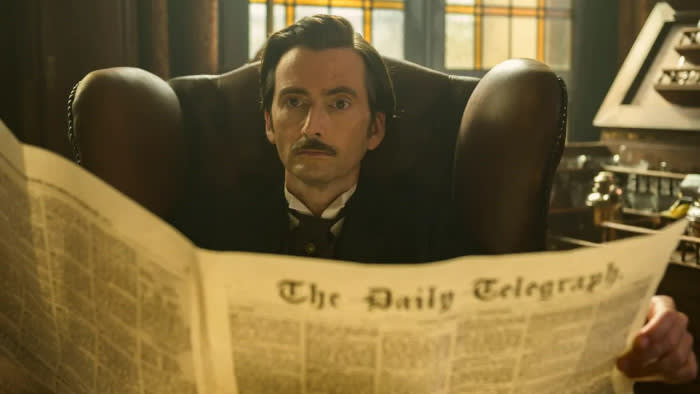Unlock the Editor’s Digest for free
Roula Khalaf, Editor of the FT, selects her favourite stories in this weekly newsletter.
Stuff continues to happen in the process to buy Britain’s Daily Telegraph, with the leading candidate to buy the newspaper, New York Sun publisher Dovid Efune, the type of person who tweets thing like “Blessed be the Israeli Air Force pilots”.
As MainFT’s Dan Thomas reported earlier this week:
Staff [think Efune is] likely to be a much more outspoken — and potentially divisive — owner than the media-shy Barclay family.
God forbid the Telegraph should become outspoken—
—ah.
Realistically, there’s a decent chance that Efune’s overture fizzles out, and other interested parties might return at the prospect of a lower price. For now, as one person close to the discussions told us, Efune “is in exclusive talks to begin exclusive talks”.
Here’s how that goes, from mainFT again:
During the period of exclusivity, Efune will be under pressure to reveal more about his plans for the title. He is in talks with US funds including Oaktree Capital Management to back his offer, according to people with knowledge of the discussions, while LionTree, which typically invests in such deals with its own funds, is advising him.
We would assume the discussions involved will also include the title revealing more about itself.
As we reported in early August last year, Telegraph Media Group — facing stalling paying subscriber numbers — made a bolt-on acquisition of The Chelsea Magazine Company, in an apparent bid to pump its total subscription count to 1mn.
Just days later, the Telegraph announced that target had been reached, ahead of the end-of-2023 deadline, and in time for since-defenestrated chief executive officer Nick Hugh to presumably collect a nice performance-linked bonus. (A parallel target to reached 10mn registrants appears to have been quietly ditched at some point.)
Much of the achievement was down to CMC readers — who were suddenly included in a Telegraph-branded growth KPI — and free users, both of which are worth far less per head than a digital Tel reader, and far far less than a print one:

Here’s the chart we made back then, updated to include the latest available figures:
Mushy. And made mushier still by weird sentences in the methodology such as this, about how CMC subscriptions are counted:
A subscriber can hold more than one subscription; e.g. if a subscriber has a subscription to two different publications, they will count as two.
Hugh’s replacement Anna Jones obviously has a tough job — effectively managing a paper that is in stasis until it has a new owner.
But one apparent business shift under her has been a move away from transparency. The Hugh era was marked by an admirable willingness to share these figures — albeit one that wavered towards the end, as reporting of subscriber numbers shifted from monthly to quarterly.
Post Jones? Not a peep. The company hasn’t published new numbers since January 18th, despite our polite prodding.
A spokesperson said the numbers are “currently linked with the ongoing sales process of TMG”. We have repeatedly asked, to no avail, whether the publication scheme will return.
We did get one useful nugget though. They told us:
As we look ahead, we continue to invest in our audiences and evolve our products, specifically across audio and the app, to best serve our dedicated subscribers and secure continued growth through 2024 and beyond. Our aim is to reach more paying readers than any other time in our history, with a medium term goal of reaching 2 million subscriptions.
Two million? Presumably, such goals have very little prospect of surviving the takeover, but — depending on what “medium term” means — presumably scenes at 111 Buckingham Palace road are something like this:

Further reading:
— How the Telegraph made its million



